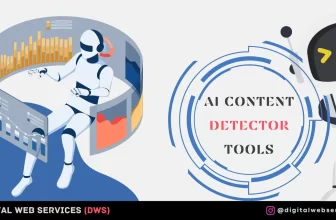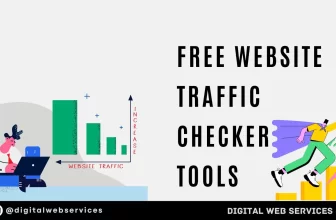
Have you ever wondered how analysts keep track of all the relationships between different pieces of data? Or have you tried to make sense of a particularly large and complex data set, only to find yourself feeling lost in a sea of numbers?
If you answered in the affirmative for any of the questions, you need to know about data mapping – the process of creating a correspondence between two sets of data. It is a key step in many analytical processes, such as data warehousing, business intelligence, and software development.
A data map is a representation of how data flows from one system to another. Data mapping tools allow you to create, edit, and view the relationship between two sets of data. The tools can be used for a variety of purposes, including data integration, data transformation, data migration, and data warehousing.
In this blog, we will talk about the top data mapping tools and data mapping techniques.
Top 4 Data Mapping Techniques
The following steps demonstrate the most efficient techniques for data mapping:
Identify the data fields
The goal of data mapping is to figure out which information needs moving or restructured in order for you achieve your objectives with it. Everything will depend on what exactly are trying accomplish through this process – whether that’s getting a better understanding about an issue at hand by viewing different sets side by side or finding trends within large volumes where humans might have difficulty seeing them otherwise.
Data mapping is used for:
Integration
Do you want to bring together two or more pieces of information in order to create a comprehensive picture?
If yes, then think about how often they will be integrated and if that frequency requires an automated tool or manual process. For example, a one-time project with limited information needs only human expertise, whereas large unstructured data might require more automation in order to extract value from them.
Transformation
Transform your data from one source format to a destination format with automated tooling or by manually performing simple steps. Transformation is done:
– To improve data quality by removing “dirty” data
– To match the requirements of another system
– To make the data more understandable or useful
Migration
Migration is also needed when you switch to a new system and need to get your old data into the new one – often done by exporting from one database and importing into another.
With so much data being moved around these days, automated software can help you identify what needs to go where and do all that hard work for you.
Warehousing
The goal is to pool all your organization’s relevant information into one source to streamline the analysis task. This way, when you run queries and reports on the database it will always give accurate results because everything has been migrating correctly from its original location in order to meet up with the requirements.
Create transformation rules
You can automate mapping workflows with drag-and-drop UIs, so even nontechnical employees are able to map out complex data in minutes.
Certain rules can be created to be reused multiple times, making it easy to transform data sets of any size without starting from scratch each time.
Imagine you are integrating data from cold emails into sales records and want them all to be formatted according to the percentage of email open rates or the number of leads. Making sure the data contains this information when transferring over means there will be no discrepancies or confusion about what type of date we are seeking.
This technique makes data mapping easier. For you, it is much less about the tedious task of transferring data from one place to another and more about actually being able to utilize that data once it has been moved.
Testing
When you map your data, the next step is to diagnose any errors in the input and fix them.
Even if you are using an automated tool, it is important to manually check for errors once you have data mapped. This ensures that your mapping software is working as promised.
With real-time mapping, you can quickly identify any issues and correct them on the spot.
Checking manually also allows you to see if there are any errors that the software was not able to identify. A tool usually produces an error when data is in an unusual format that the software does not recognize.
A validation tool can also be used to check your data against a set of rules that you have defined. The tool will flag an error if the data does not meet the rules.
If you are manually mapping data, checking for errors is even more important. Not only will this help you to improve the quality of your data, but it will also help to ensure that the data is being mapped correctly.
Deploying
After you have tested your logic, it is time to schedule any necessary migrations or integrations with other systems.
If you are using an automated tool, it is important to configure it properly before running it on your data. This includes setting up any necessary authentication, choosing the right input and output formats, and selecting the appropriate transformation rules.
Top 4 Data Mapping Tools
Data mapping tools are an easy way to make your data more accessible and easier for you, as well. Use them without any coding knowledge because most of them have drag-and-drop UIs that allow users of all ages to complete tasks quickly.
Apart from making data visualizations and interpretations easier, they also have other functions such as helping with management tasks. An example is migrating your databases from one platform to another.
Let’s dive in to the top 4 data mapping tools:
Carto
With Carto’s Builder, connect your data in seconds. Whether you’re starting from a spreadsheet, connecting to the warehouse or using remote files (such as CSVs), Builder allows for easy addition of all types and sizes through a rapid drag-and-drop interface that integrates with leading cloud platforms like BigQuery.
Carto also has the features of one-click mapping and the ability to analyze location-based data with the Analytical Toolbox.
Moreover, Carto has an app prototyping library that provides powerful tools for designing maps and references in code. With the help of this visualization API, it’s possible to create apps with complete development libraries. Share your insights with the world in seconds. With a few clicks, you can make dashboards and visualizations available for everyone.
Tableau
It is a powerful tool that helps you create data visualizations.
The drag-and-drop interface makes it easy for anyone on your team, even those who don’t have programming experience. Moreover, you can easily share dashboards with colleagues so they’re always up-to-date too.
Bloomi
Bloomi is an iPaaS solution that connects both cloud and on-premise data. Design your integrations with Bloom’s Atoms, then transfer all of those acquired insights into action using their easy drag-and-drop interface for mapping out connections in seconds.
The tool can map data between these two environments, so you don’t need any technical knowledge or software installation for it.
Xplenty
Xplenty’s data mapping tool does an automated conversion of 100 sources to cloud databases without human intervention. The same rules apply across all the different systems, meaning there is less room for errors when converting between them.
Similar to the other tools, Xplenty has a range of capabilities for transforming raw data without the need to code.
Wrapping up the data mapping tools and techniques
Data mapping unifies different sources of marketing campaign data to give marketers a holistic view and make the right decisions faster.
Behavioral retargeting is one of the major benefits of data mapping. The process allows businesses to connect browsing habits, purchase history and time spent on a page with other stats like demographic information or users’ purchasing power in order for them to customize their experiences.
Data silos are not only bad for business, they are a great challenge on the way to rapid growth and analytics maturity. Data mapping ensures that all relevant information is accessible where it needs to be at any given time. This will help you remove those pesky barriers between departments so everyone can collaborate more effectively and make better business decisions.
If you select the right tool and apply the top techniques, data mapping will help you measure your marketing performance. For instance, you can connect with different types of data, such as impressions from Facebook ads with conversions tracked using Google Analytics, in order to identify which channel’s insights are most valuable.
In short, you get a more accurate picture of where prospects come into contact and what they are interested in buying straight away
Digital Web Services (DWS) is a leading IT company specializing in Software Development, Web Application Development, Website Designing, and Digital Marketing. Here are providing all kinds of services and solutions for the digital transformation of any business and website.










